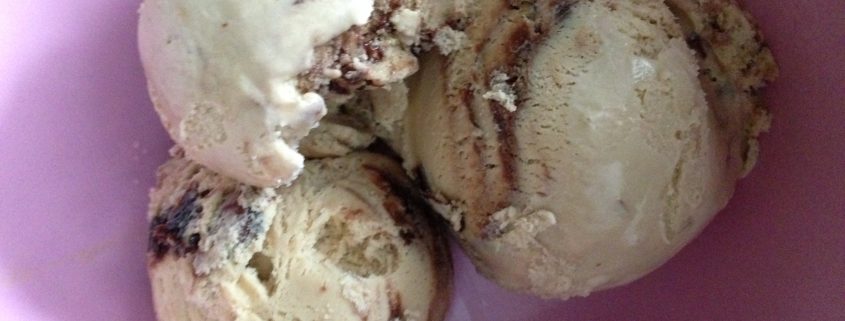“…We All Scream For Ice Cream”
 If anyone knows me really well, they will know that I love ice cream. Yep, I am a registered dietitian nutritionist, and I am telling you that I love ice cream. And, I am so excited that the whole month of July is celebrated as National Ice Cream Month!
If anyone knows me really well, they will know that I love ice cream. Yep, I am a registered dietitian nutritionist, and I am telling you that I love ice cream. And, I am so excited that the whole month of July is celebrated as National Ice Cream Month!
In 1984, President Ronald Regan designated July as National Ice Cream Month through a presidential proclamation. He declared ice cream to be a fun and nutritious food that should be enjoyed by all. This is a perfect month to celebrate as the summer months are sometimes synonymous with ice cream or frozen treats.
Today, the ice cream industry produces revenues upwards of $10 billion, with more than half the revenue coming specifically from the take-home variety. Furthermore, approximately 9% of the nation’s milk goes toward the production of ice cream. In preparation for summer and the uptick in consumption, June is the month in which most ice cream is produced.
The following are some fun facts about ice cream:
– Vanilla is the most popular flavor
– The United States in the number one ice cream consuming country in the world
– Chocolate syrup is the most popular ice cream topping
– Ice cream cones were invented in 1904 at the World’s Fair in St. Louis
– There are many varieties of ice cream: regular ice cream, frozen custard, frozen yogurt, reduced-fat ice cream, sherbet, gelato, and most recently others involving milk alternatives such as soy, almond, coconut and rice
Lots of people have a negative perception of ice cream. This stems from its potential high sugar, fat and calorie content. However, ice cream does not have to be a food you deem “bad” causing you to stay away at all costs. With precise planning and controlled portions, you can actually enjoy ice cream without feeling like you are eating unhealthy. For instance, a half-cup of vanilla ice cream contains 137 calories, 7 grams of fat and 14 grams of sugar. This amount also contains 6% of the daily value of vitamin A and 8% of the daily value of calcium – both positive nutrients. The calories in a half-cup aren’t going to break your calorie bank for the day that is if you keep it to a half-cup.
It is true that you can’t just look at the calories; the fat and sugar contents need to be taken into consideration as well. Keep in mind that a large percentage of the sugar content you see on the label in the above example consists of natural sugar in the form of lactose from the milk. The fat on the other hand, while it is also from a natural source (milk), can become troublesome when looking at the total picture of your daily intake. Therefore, it is probably best to seek out the low-fat options if you are sure you cannot keep to the half-cup portion.
Other varieties of ice cream are available and may make it easier to include this yummy treat more often. Varieties such as rice milk alternatives, sorbets, reduced-fat and frozen yogurt may decrease the calorie, fat and sugar contents. You just have to be cognizant of the nutrition facts and ingredients. Read the labels! Look for types that do not have lengthy ingredient lists, this will ensure a more pure product.
You can also make your own ice cream or a derivative of this frozen treat at home. This can be achieved with Greek yogurt, fruit, and ice. Making your own ice cream or frozen treat will ensure a lower calorie option with less fat and sugar, and an overall healthier product.
It’s your turn to take action: Please share how you enjoy ice cream during the summer months in a healthy way.


Leave a Reply
Want to join the discussion?Feel free to contribute!